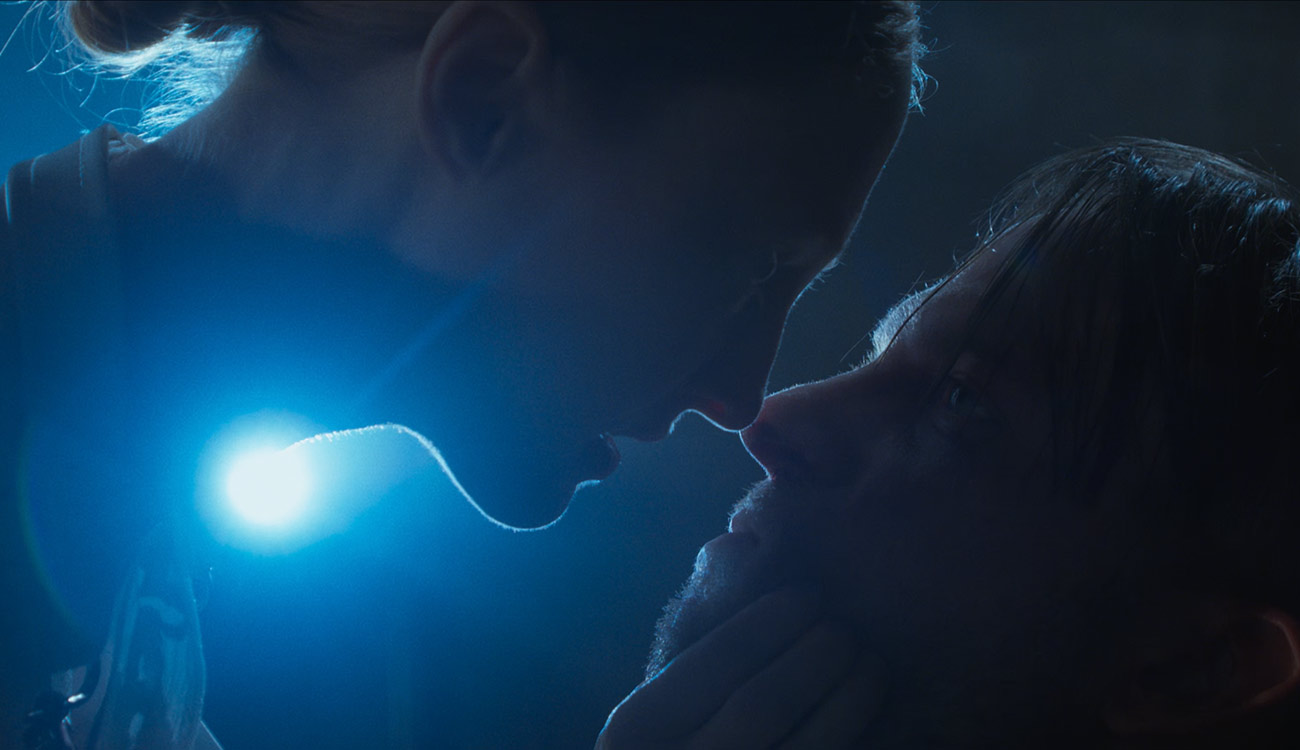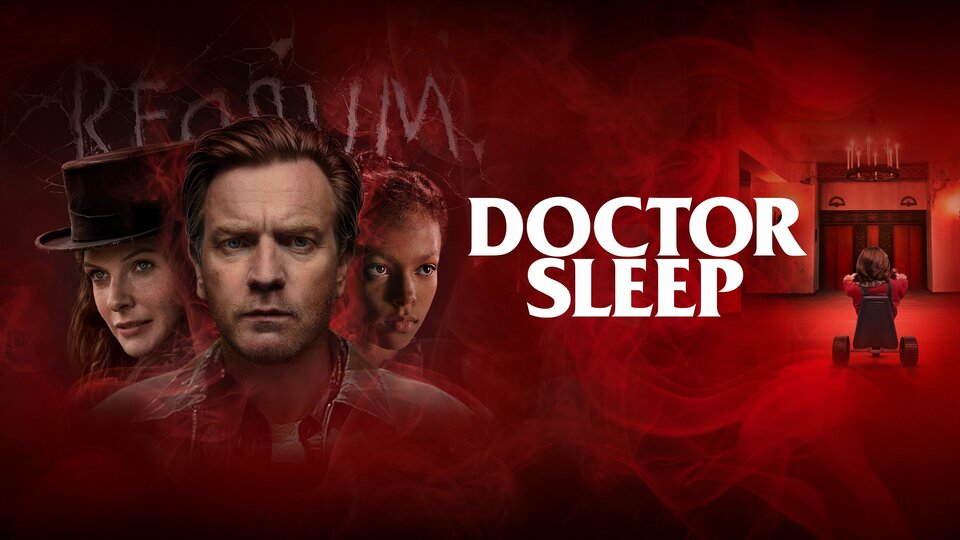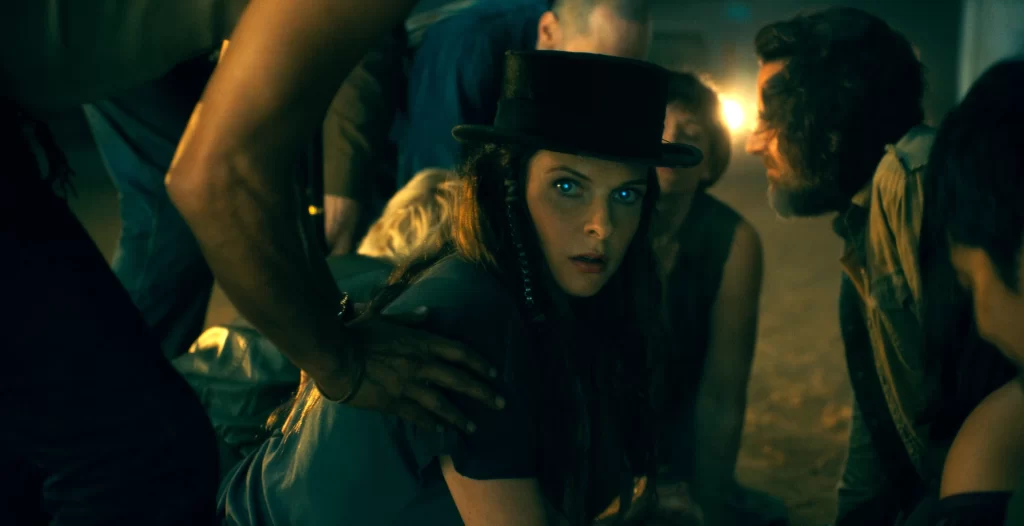Reviews
Brooklyn Horror Film Festival 2025: ‘Blood Shine’ Review

I’ve been pretty clear for some time that cult-based horror isn’t my bag. Many subgenre tropes and cliches work well for me, but cult horror tropes do not. I can see how they work for some audiences, and I tend to flat-out stay away from them. Why watch a film in a subgenre that you don’t necessarily care for? But when I heard that Larry Fessenden was gracing the silver screen, I didn’t care what the subgenre was. I knew I would be seated with popcorn and a cola, ready to see whatever he’s up to. Plus, when one of the writers/directors of the film leads with, “We hope this fucks you up,” how can you not get excited? Little did I know I was about to witness a film with a scene so genuinely grotesque (and kind of hot) that it would make David Cronenberg blush. Thankfully, I was surprised by Blood Shine.
A Filmmaker’s Deadly Encounter
I think there will be a debate over whether Blood Shine is a film about cults. On one hand, it very much is. Larry Fessenden is the leader of this cult who spreads his word (and teachings) through a series of VHS tapes. On the other hand, it’s a film that examines the psyche of two very different people going through similar experiences: Clara and her attempt to come to terms with herself, and Brighton, who deserves little respect and, over his 26 days of torture, starts to realize it. The film’s main driving point is cult-forward. However, the majority of the film’s runtime is spent between Brighton and Clara. So, whether or not this is a cult film will depend on the viewer.
Fessenden and Bennett Give Standout Performances in Blood Shine
The performances in Blood Shine are stellar. Emily Bennett pulls incredible triple duty as co-writer, co-director, and lead. It’s hard enough to do one of those well, let alone three. She weaponizes her charm in the most deadly ways possible. Of course, Larry knocks it out of the park. As always. There’s a natural charisma behind Fessenden’s on-screen (and off) personas. Whether he has one line or a hundred, Fessenden continues to bring his A game. And for the time she’s on screen, Toby Poser does a great job of creating an incredibly creepy atmosphere. Though many of her films haven’t worked for me, I can’t help but admire how genuinely talented she is.
With Blood Shine being a film about emotional and physical torture, the question everyone should be asking is, “How are the practical effects?” Brian Spears (Smile 2, Bloody Axe Wound) does not play around. Spears’s SFX work is impeccable. From the simplest of knife wounds to that scene towards the end, Spears refuses to let the audience get a second of comfort. What’s seemingly becoming a lost art in the digital world, Spears gives a giant middle finger to anyone who thinks practical is dead.
Blood Shine Is a Cult Horror Movie Worth Watching
Would I say that Blood Shine changed my mind about cult horror? Not in a million years. Blood Shine is an outlier. Its emphasis on character and substance is something I find many films of its kind missing. Rather than being a film about a cult, it’s a film that exists around a cult. The only thing I would have asked for more of is to see a bit more of Clara’s torture of Brighton. We see a very solid amount, but it does become a lot of the same after a while. Even though it does become very samey, it’s still effective as hell. It’ll make me think twice before knocking on someone’s door if my car breaks down in the middle of nowhere.
One final note, I’d be remiss to not bring up how wonderful it was to see Brendan Sexton III on screen. It’s always a delight to see him, and I think this is the first time he and Larry Fessenden have reunited for a film (though not sharing screentime) since Session 9!
Reviews
‘Doctor Sleep’ Is Mike Flanagan’s Finest Hour

If there was ever any horror film that managed to surpass what came before it, let it be known that few have been as successful at it as Mike Flanagan’s Doctor Sleep.
Sacrilege, some might say, to throw Kubrick out into the snow and raise a sequel to such high esteem. But the fact of the matter is, with Doctor Sleep now six years in the rear view, it’s still shining as bright as it can. It’s a marvel, on both a technical and narrative level, and stands tall as the best of all the Stephen King adaptations and as Mike Flanagan’s finest hour.
After his father Jack was taken from him by the Overlook Hotel in 1980, Dan Torrance is a changed man. Struggling against alcoholism and his latent “shine”, a psychic ability that forces him to see the spirits of the dead, Dan tries his best to shut out the horrors of his past and the world beyond most people’s sight. Even when he gets sober, he hides away at a quiet job as a hospice orderly and spends most of his time in a rented room. But when a gifted young girl named Abra is terrorized by a mysterious and cruel cult that feeds on those that shine, Dan is forced to wrestle personal demons within and monsters without to protect her.
Doctor Sleep is The Kind of Director’s Cut You Need
Despite how close the two stories are, Kubrick’s The Shining and Flanagan’s Doctor Sleep, are so different and yet so perfectly intertwined. The story of Dan, Abra, and the True Knot, is one that really earns every minute of its runtime as it sculpts more life into the world of The Shining. It’s for that reason that between the theatrical cut of the film and the director’s cut, I have to go for the director’s cut every time. The dialogue benefits from the relaxed pace the extra 30 minutes buys it, allowing for little moments of character development absent from the original.
The director’s cut also has some vital bits of dialogue that, for the life of me, I can’t explain the absence of in the original cut; most of these not only develop Dan’s healing process throughout the film but also elaborate on the events and aftermath of The Shining in a whole new way. And even at a hefty three hours, the film is paced so well that the difference between the two cuts is hardly even noticeable. That half hour doesn’t just breeze by, it pulls you in and keeps you locked in.
A Technical Showstopper in Its Own Right
Though its plot and look owe quite a lot to The Shining, what Mike Flanagan has done with the film’s very particular cinematography is formidable in its own right. Sleep is best known now for resurrecting elements of Kubrick’s aesthetic spot on, recreating costumes, sets, and lighting to be more in line with the first film (this includes a dead-on recreation of, spoilers, the Overlook Hotel). And that is thoroughly impressive, especially with the casting of our Wendy and Jack this time around. But in the buildup to that recreation, Doctor Sleep forms a mirror to the aesthetics Kubrick played in, bridging the visuals of both movies.
It takes the cold, detached, isolating camerawork and framing of Kubrick’s film and brings them out into the real world, no longer confined to the Overlook. It examines what that isolation feels like when, though you have people in your life and those you call friends and family, you can’t get away from your own loneliness or desire to escape. When the confines are no longer physical, but mental, how can you still feel so trapped? The film plays with this notion of freedom within the mind multiple times, most notably the psychic confrontation set pieces throughout.
Though its more grotesque aspects can be blood curdling, especially when it comes to scenes of the True Knot feeding, the movie is just as powerful when it generates that pure, all-consuming eeriness that permeates throughout. That eeriness is the eeriness of being disconnected from humanity, either emotionally or literally, in the case of our villains.
Ferguson and McGregor Make Horror History in Doctor Sleep
And through this environment and eerie air comes a cast of star players, headed by Ewan McGregor and Rebecca Ferguson. And frankly, it’s nearly impossible to pin down which performance is best between the leads here.
Ferguson’s career-defining time as Rose the Hat is the genesis of one of the most sinister horror villains of the past decade, showing out with this predatory gleam in her eye and a lilt in her voice that suggests something is ever so slightly off. Her vocal control is incredible, especially when her mask drops and she’s able to stop selling people on a false image and really bare her teeth.
Likewise, Ewan McGregor is truly captivating as Dan, whose struggles, both emotional and physical in the film, end up being one of the most gripping performances of his career. There’s tension in his muscles as he fights against every instinct to shut himself away and self-medicate, to run away from the problem. His decision to stay and fight leads to an insane climax, which crescendos the arc of Dan into something purely perfect.
King’s Tale of Pure Pathos, Fulfilled by Flanagan’s Execution
Doctor Sleep could never have been your bogstandard sequel, because the source material demanded excellence. It demanded a re-examining of a monster who was a man before all else, and of his broken child who grew into a shattered man like Dan Torrance. It demanded we see the capacity of that man to put himself back together. It demanded villains with rich interior worlds and a dark side that feels all too real.
And above all else, it demanded a captivating ending that pierces the heart, and pays respect to both the source material and the legendary film that transcended it. And on all demands, Mike Flanagan delivered.
Reviews
‘Frankenstein’ Review: Guillermo Del Toro Is Off to the Races

Those expecting Guillermo Del Toro’s Frankenstein to be similar to the book, or to any other adaptation, are in for something else. A longtime enjoyer of the creature’s story, Del Toro instead draws from many places: the novel, James Whale’s culturally defining 1931 film, the Kenneth Branagh version, there are even hints from Terence Fisher’s Curse of Frankenstein, and if the set design and costuming are to be believed, there are trace elements of the National Theatre production too.
The formulation to breathe life into this amalgam is a sort of storm cloud of cultural memory and personal desire for Del Toro. This is about crafting his Frankenstein: the one he wanted to see since he was young, the vision he wanted to stitch together. What results is an experience that is more colorful and kinetic and well-loved by its creator than any Frankenstein we’ve had yet, but what it leaves behind is much of its gothic heart. Quiet darkness, looming dread, poetry, and romance are set aside as what has been sold as “the definitive retelling” goes off to the races. It’s a fast-paced ride through a world of mad science, and you’re on it.
Victor Frankenstein’s Ambition and Tragedy
A tale as old as time, with some changes: the morbid talents and untamed hubris of Victor Frankenstein (Oscar Isaac) guide him to challenge death itself. Spurred by a wealthy investor named Henrich Harlander, and a desire for Harlander’s niece Elizabeth (Mia Goth), Victor uses dead flesh and voltaic vigor to bring a creature to life. His attempts to rear it, however, go horribly wrong, setting the two on a bloody collision course as the definitions of man and monster become blurred.
Guillermo Del Toro’s Frankenstein is more Hellboy in its presentation than it is Crimson Peak; it’s honestly more similar to Coppola’s Dracula than either of them. The film is barely done with its opening when it starts with a loud sequence of the monster attacking Walton’s ship on the ice. Flinging crew members about and walking against volleys of gunfire, he is a monstrosity by no other name. The Creature (Jacob Elordi) cries out in guttural screams, part animal and part man, as it calls for its creator to be returned to him. While visually impressive (and it remains visually impressive throughout, believe me), this appropriately bombastic hook foreshadows a problem with tone and tempo.
A Monster That Moves Too Fast
The pace overall is far too fast for its first half, even with its heavy two-and-a-half-hour runtime. It’s also a far cry from the brooding nature the story usually takes. A scene where Victor demonstrates rudimentary reanimation to his peers and a council of judges is rapid, where it should be agonizingly slow. There’s horror and an instability in Victor to be emphasized in that moment, but the grotesque sight is an oddly triumphant one instead. Most do not revile his experiments; in fact he’s taken quite seriously.
Many scenes like this create a tonal problem that makes Victor’s tale lean more toward melodrama than toward philosophical or emotional aspects; he is blatantly wild and free, in a way that is respected rather than pitied. There are opportunities to stop, breathe in the Victorian roses and the smell of death, to get really dour, but it’s neglected until the film’s second half.
Isaac’s and Goth’s performances are overwrought at points, feeling more like pantomimes of Byronic characters. I’m not entirely convinced it has more to do with them than with the script they’re given. Like Victor working with the parts of inmates and dead soldiers, even the best of actors with the best of on-screen chemistry are forced to make do. The dialogue has incredibly high highs (especially in its final moments), but when it has lows, how low they are; a character outright stating that “Victor is the real monster” adage to his face was an ocean floor piece of writing if there ever was one.
Isaac, Goth, and Elordi Bring Life to the Dead
Jacob Elordi’s work here, however, is blameless. Though Elordi’s physical performance as the creature will surely win praise, his time speaking is the true highlight. It’s almost certainly a definitive portrayal of the character; his voice for Victor’s creation is haunted with scorn and solitude, the same way his flesh is haunted by the marks of his creator’s handiwork. It agonizes me to see so little of the books’ most iconic lines used wholesale here, because they would be absolutely perfect coming from Elordi. Still, he has incredible chemistry with both Isaac and Goth, and for as brief as their time together is, he radiates pure force.
Frankenstein Is a Masterclass in Mise-En-Scène
Despite its pacing and tone issues, one can’t help but appreciate the truly masterful craftsmanship Del Toro has managed to pack into the screen. Every millimeter of the sets is carved to specification, filled with personality through to the shadows. Every piece of brick, hint of frost, stain of blood, and curve of the vine is painstakingly and surgically placed to create one of the most wonderful and spellbinding sets you’ve seen—and then it keeps presenting you with new environments like that, over, and over.
At the very least, Del Toro’s Frankenstein is a masterpiece of mise-en-scène down to the minutest of details, and that makes it endlessly rewatchable for aesthetic purposes. This isn’t even getting into the effervescent lighting, or how returning collaborator Kate Hawley has outdone herself again with the costuming. Guillermo Del Toro tackling the king of gothic horror stories, a story written by the mother of all science fiction, inevitably set a high bar for him to clear. And while it’s not a pitch perfect rendering of Mary Shelley’s slow moving and Shakespearean epistolary, it is still one of the best-looking movies you will see all year.
Perhaps for us, it’s at the cost of adapting the straightforward, dark story we know into something more operatic. It sings the tale like a soprano rather than reciting it like humble prose, and it doesn’t always sing well. But for Del Toro, the epic scale and voice of this adaptation is the wage expected for making the movie he’s always dreamed of. Even with its problems, it’s well worth it to see a visionary director at work on a story they love.























